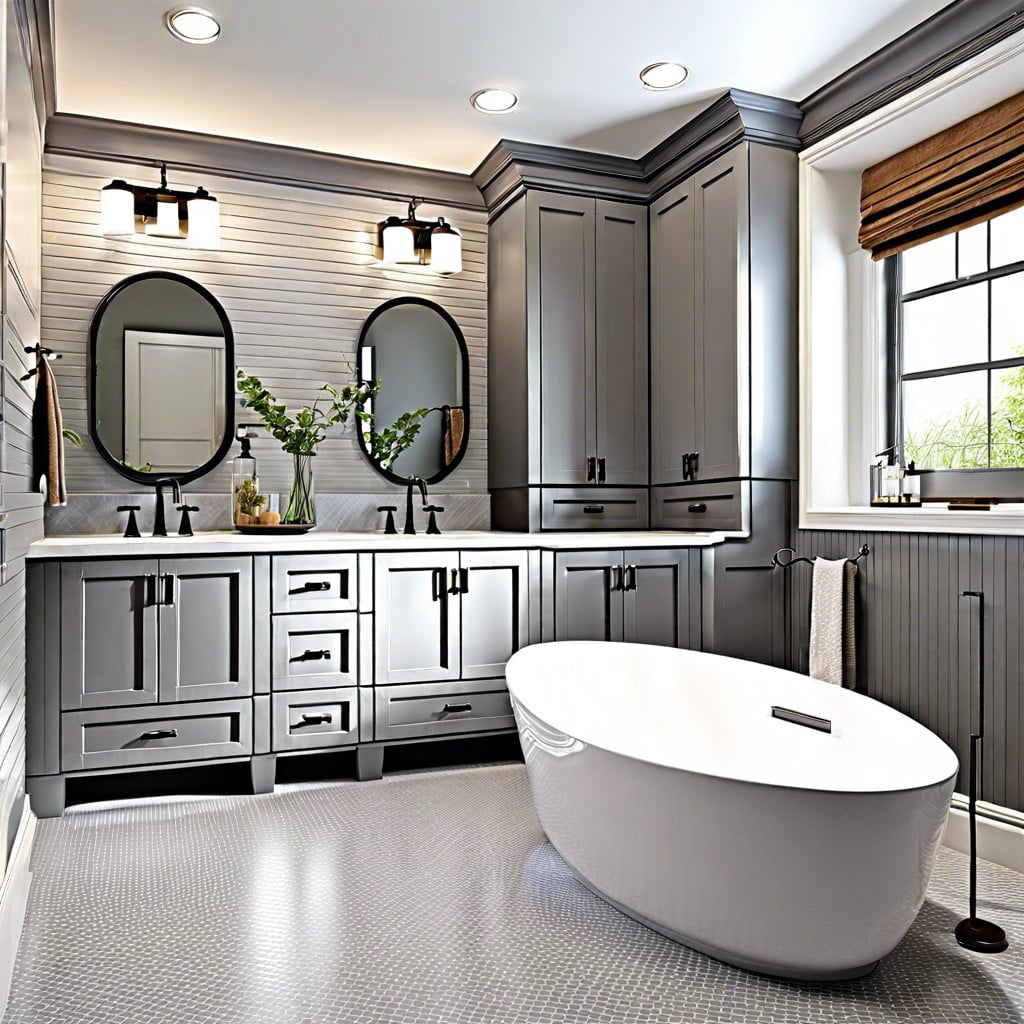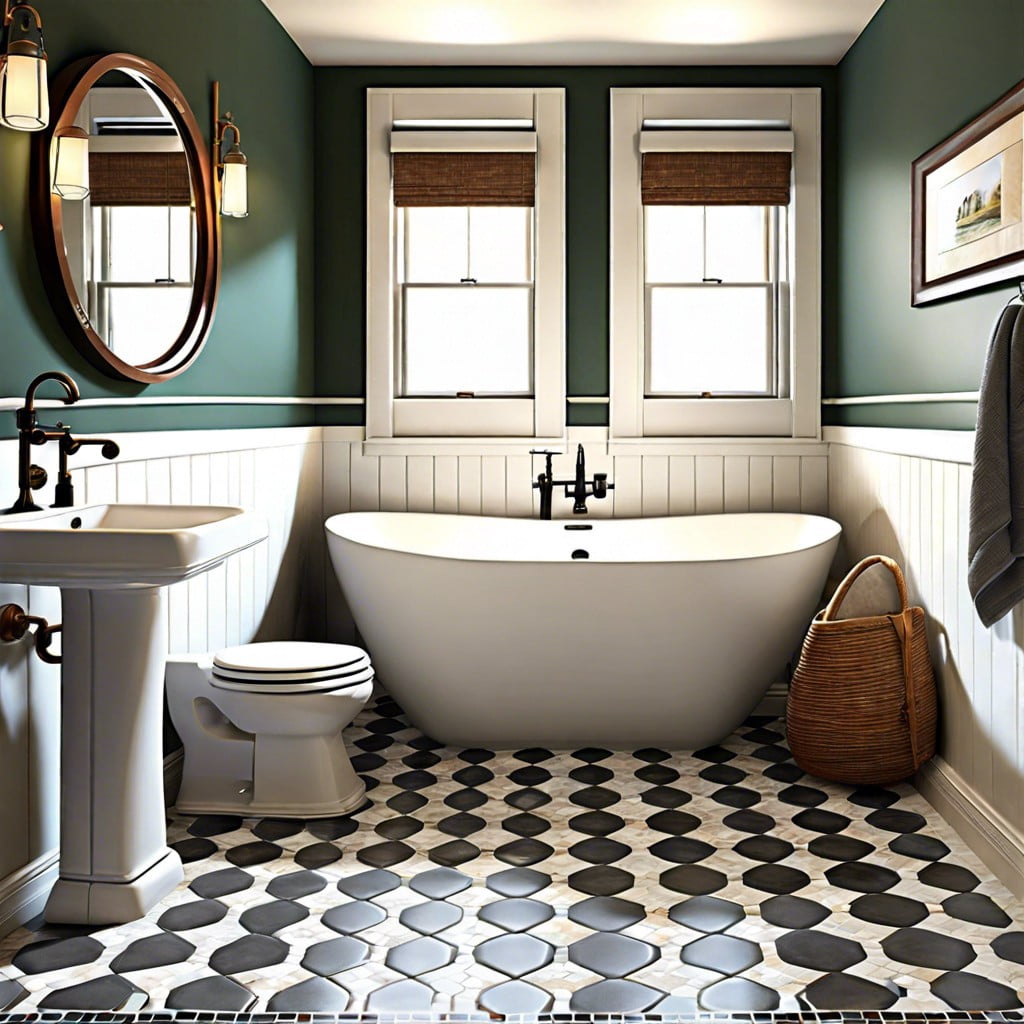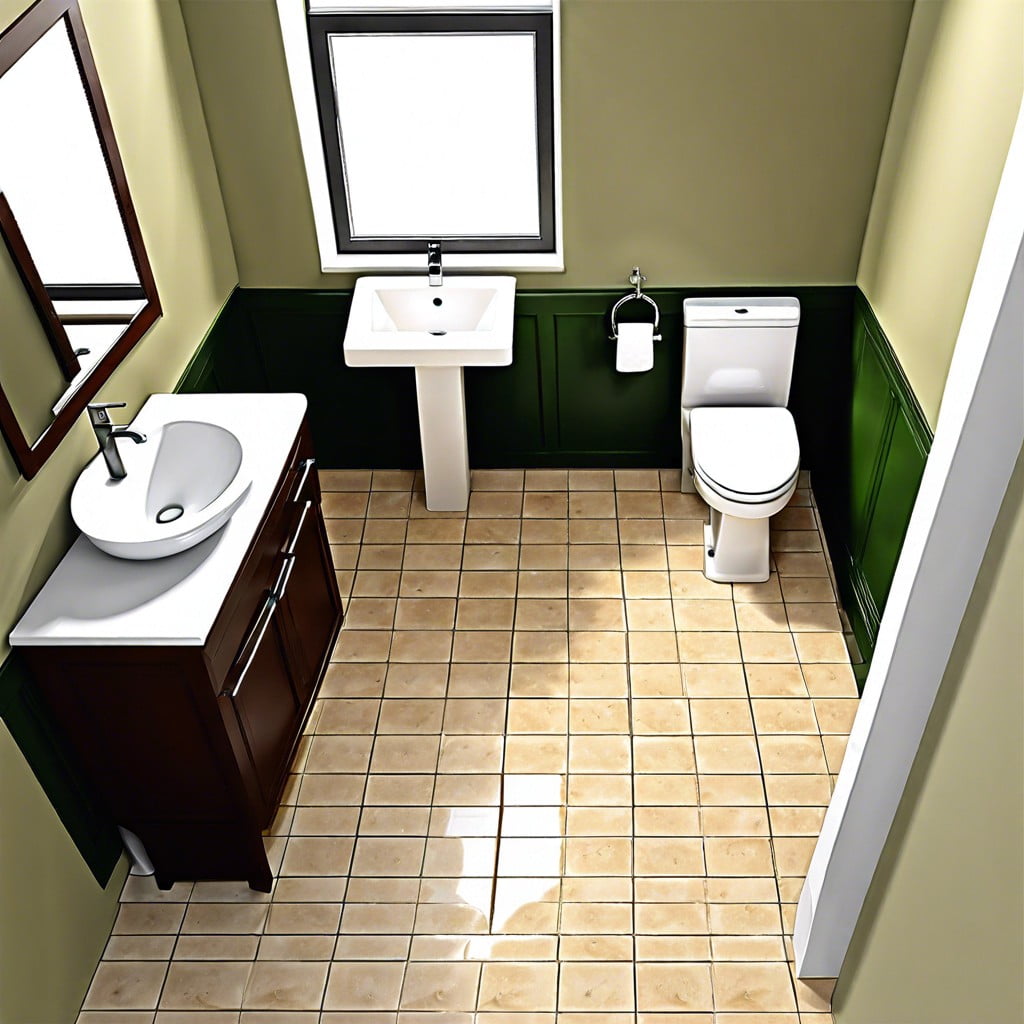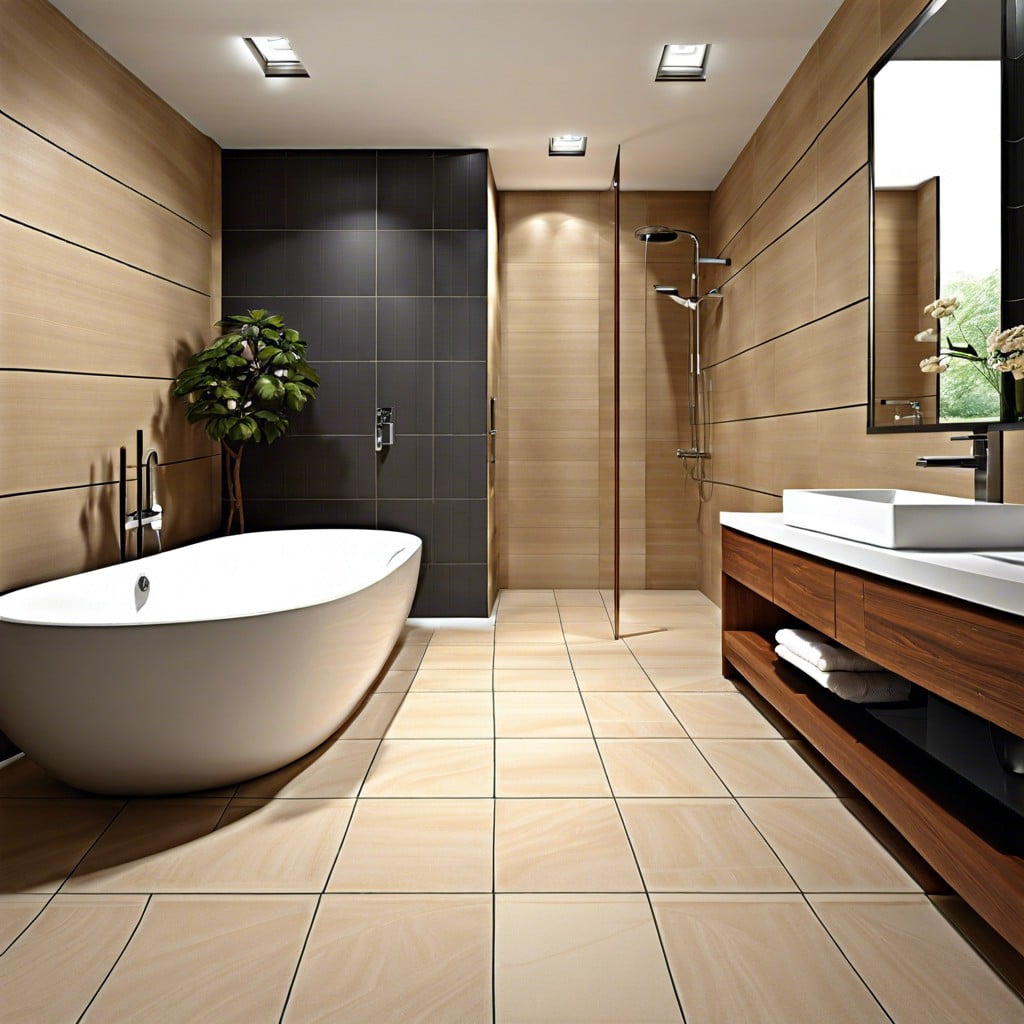Last updated on
Discover practical tips and crucial considerations for selecting the ideal bathroom vanity that suits your space and style.
Key takeaways:
- Consider storage, style, and durability when choosing a bathroom vanity.
- Size, number of sinks, material, and height are key factors.
- Explore different styles, from traditional to minimalist to upcycled.
- Utilize the space beneath the sink with a cabinet for extra storage.
- Anchor your vanity to the wall for safety and longevity.
Storage With Style
Optimizing your bathroom’s visual appeal while enhancing functionality, vanities must balance aesthetic and practicality. An eye-catching unit can transform mundane rituals into luxurious experiences.
Consider floating vanities to create an illusion of space, or go timeless with classic wooden designs that evoke warmth.
For modern minimalism, sleek lines and handleless drawers are the way to go, without sacrificing storage necessity.
Beyond looks, prioritizing sturdy materials resistant to moisture will ensure longevity amidst daily steam and splashes.
Choose a vanity that reflects your personal style while keeping clutter at bay, marrying form with function for a chic yet efficient bathroom environment.
Choosing the Right Bathroom Vanity for Your Home
When selecting your bathroom vanity, consider the size of your space. An oversized vanity cramps a small bathroom, while a tiny vanity in a large room may seem lost. Pair functionality with aesthetics – balance ample storage with a design that complements your bathroom’s decor.
Think about the number of sinks. Couples might prefer a double vanity for simultaneous morning routines, but this choice comes at the expense of counter space.
Material selection is crucial for durability and maintenance. A marble top exudes luxury but requires care to avoid stains. Conversely, quartz offers resilience with less upkeep.
Lastly, heed the vanity height. Standard vanities run about 31 inches tall, but modern designs offer comfort-height vanities closer to the height of kitchen counters which are more ergonomic for most adults. Choose based on the primary users’ comfort and convenience.
Explore Bathroom Vanities in a Range of Styles
The exploration of vanity styles should be an adventure, not a chore. Traditionalists might lean towards classic wood finishes and ornate designs that evoke a sense of timelessness. Contemporary enthusiasts often opt for sleek, minimalist vanities with straight lines and bold, unadorned surfaces.
For the eclectically inclined, upcycled pieces such as repurposed vintage dressers bring a unique twist and story to the space.
Transitioning from the bedroom to the bathroom, the floating vanity has surged in popularity, creating a sense of increased space and modern flair. Innovative wall-mounted options free up floor space, making cleaning a breeze and offering a chic, streamlined look.
For environments where conservatism in water use is becoming increasingly important, integrated solutions with low-flow faucets and sustainably sourced materials allow for style without environmental compromise. The range of materials, from solid woods to engineered stones and even concrete, offers new possibilities in texture and color coordination.
Remember, the functionality of a vanity should be as much of a priority as its aesthetics. The internal configuration of drawers, shelves, and compartments must cater to your specific storage needs, ensuring ease of access and organization.
Extra Storage With a Cabinet Under Your Sink
Utilizing the space beneath the sink is a smart way to expand your bathroom storage without cluttering the room. Here’s why incorporating a cabinet under your sink is practical:
- It maximizes unused space, turning it into a hidden storage area for cleaning products, toiletries, or towels.
- A variety of designs, from shelf-based to pull-out drawers, allow you to customize the storage to your needs.
- Integrating a cabinet helps maintain a tidy appearance by keeping personal items out of sight.
- Selecting a model with adjustable shelves offers flexibility to accommodate items of various sizes.
- With the addition of organizers or bins inside the cabinet, you can maintain order and easily access your bathroom essentials.
Incorporating a cabinet under the sink is a clever strategy that both organizes and enhances the functionality of your bathroom space.
Remember to Anchor Furniture to the Wall
Securing a bathroom vanity to the wall isn’t simply a recommendation; it’s a critical safety measure. The stability it offers protects both the furniture and its users from potential danger. Sudden shifts or accidental nudges can cause freestanding vanities to topple—an especially concerning risk in households with children or pets.
Anchoring also contributes to the longevity of your vanity by preventing warping or damage that can result from uneven weight distribution or moisture exposure.
When anchoring, take proper care to locate wall studs for maximum hold; drywall alone won’t suffice. Use the right hardware for your wall type—whether it’s plaster, drywall, or tile—to ensure a secure fit. Never overlook the importance of this step, even with smaller vanity units. The peace of mind that comes with a securely fixed vanity is invaluable, especially in the bathroom’s often-wet environment where slips and falls are more likely.
Recap




